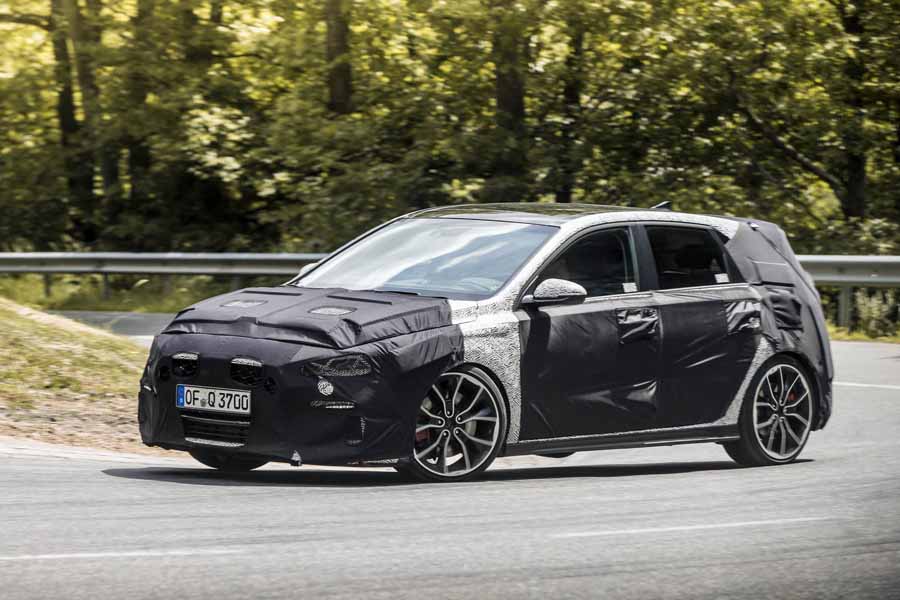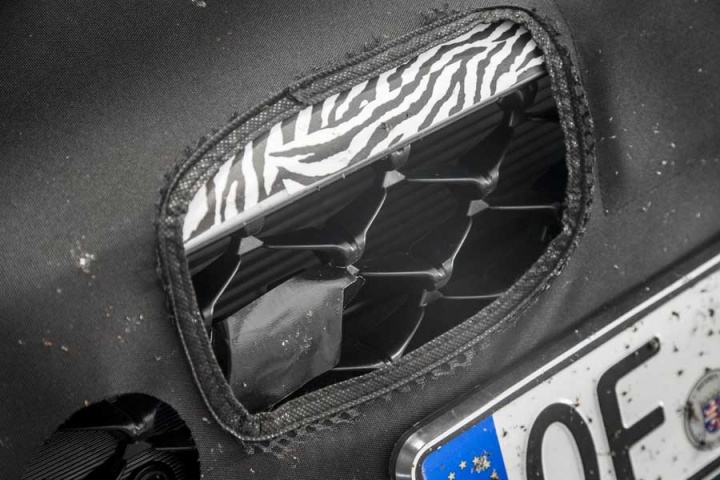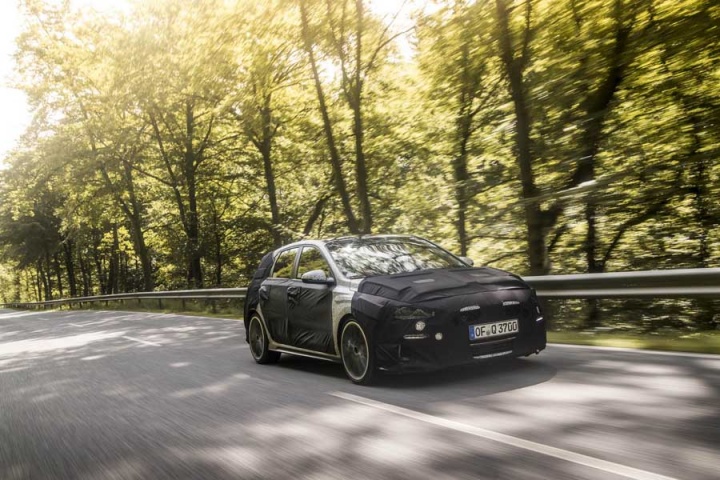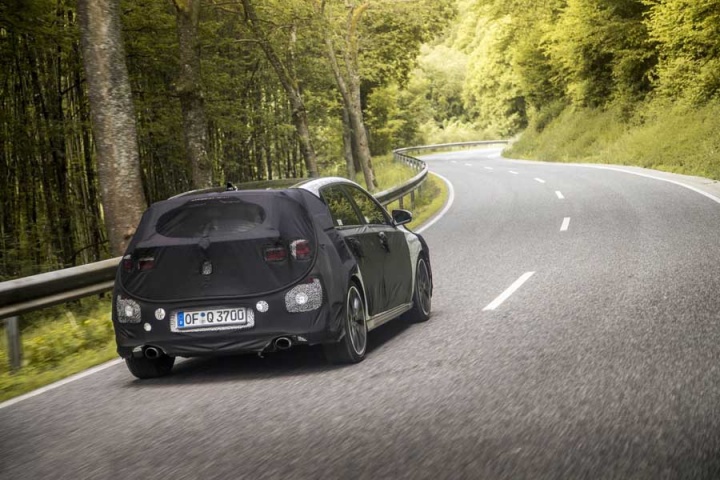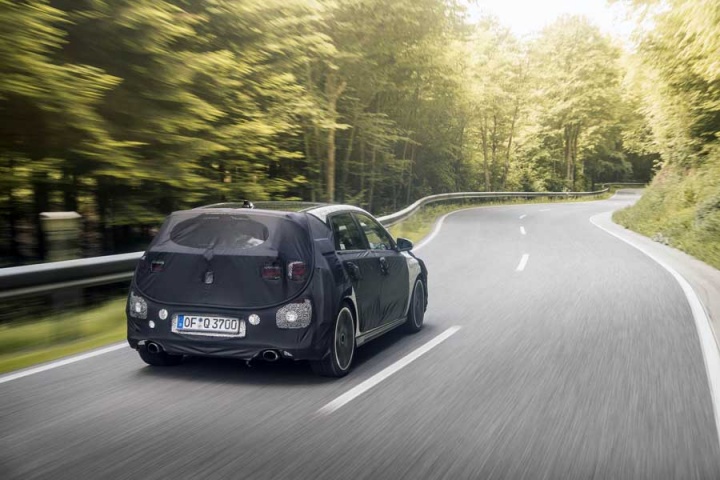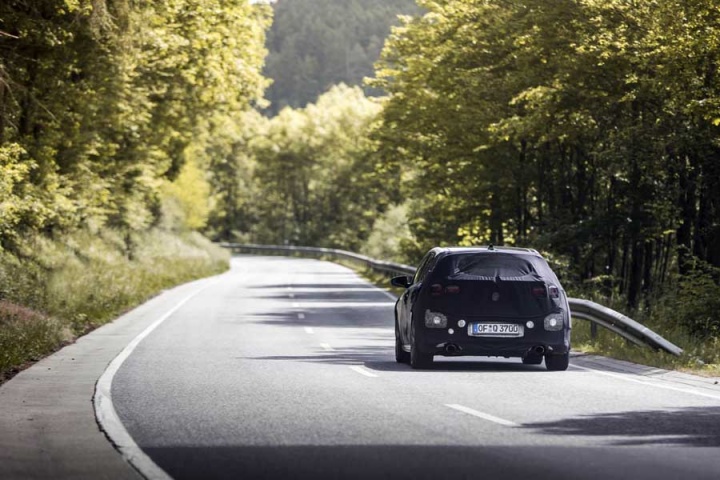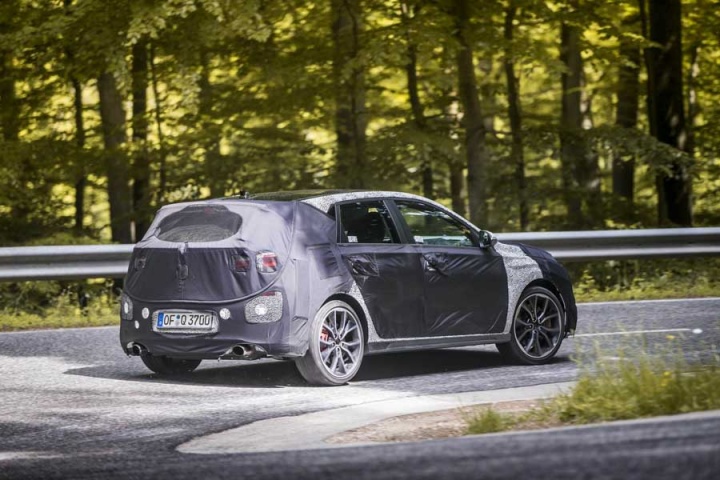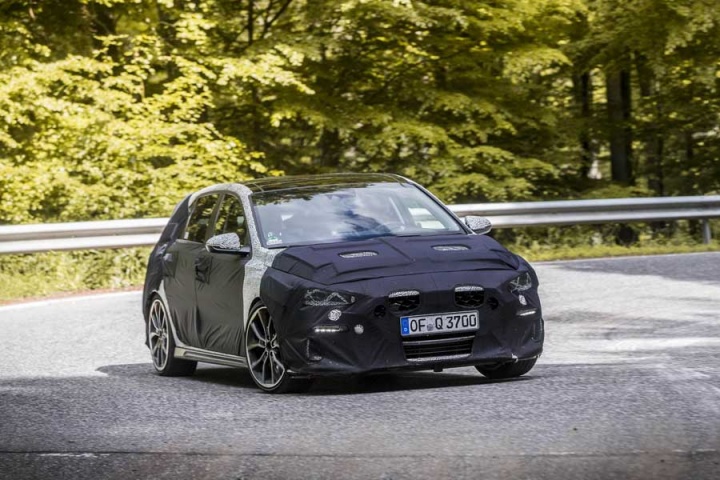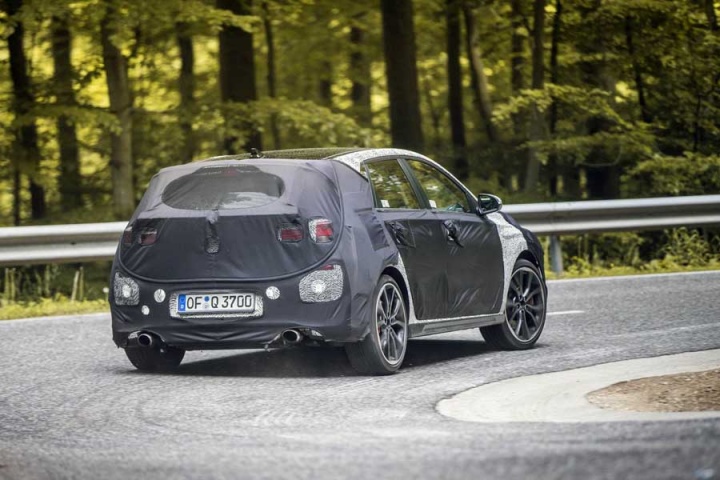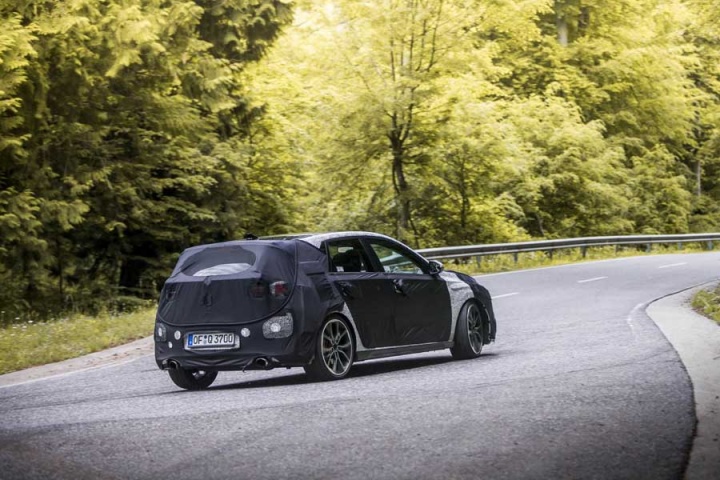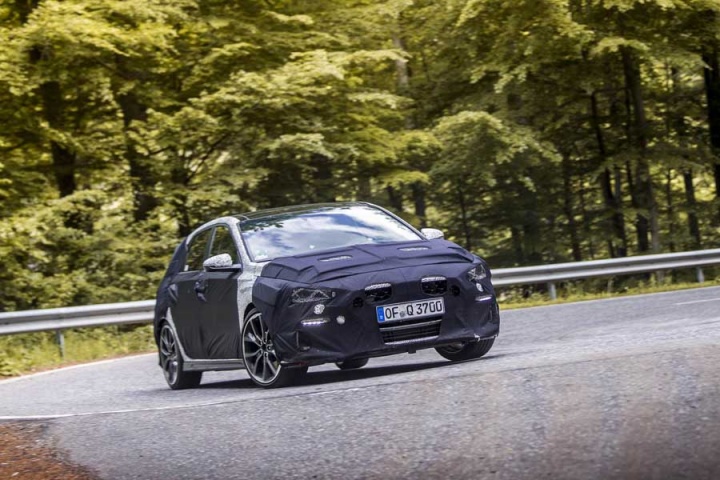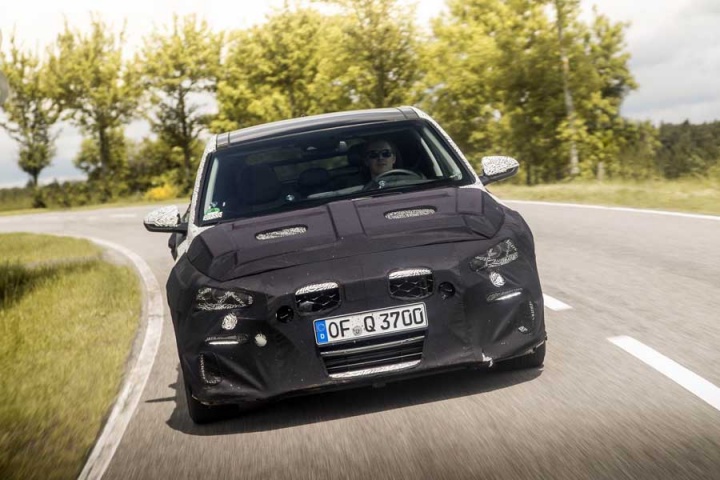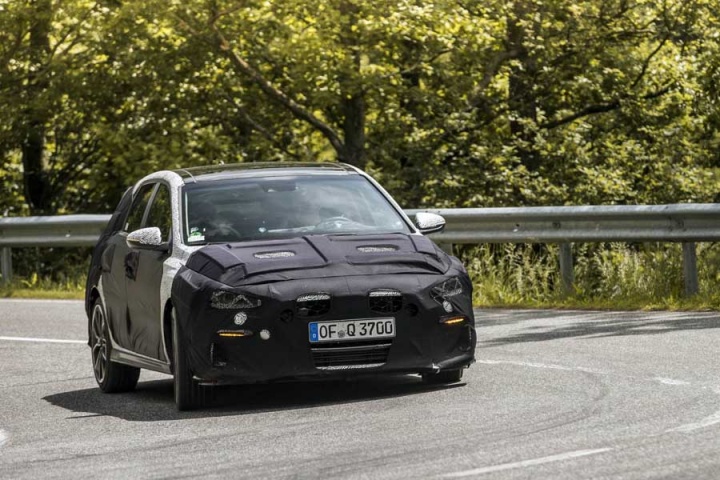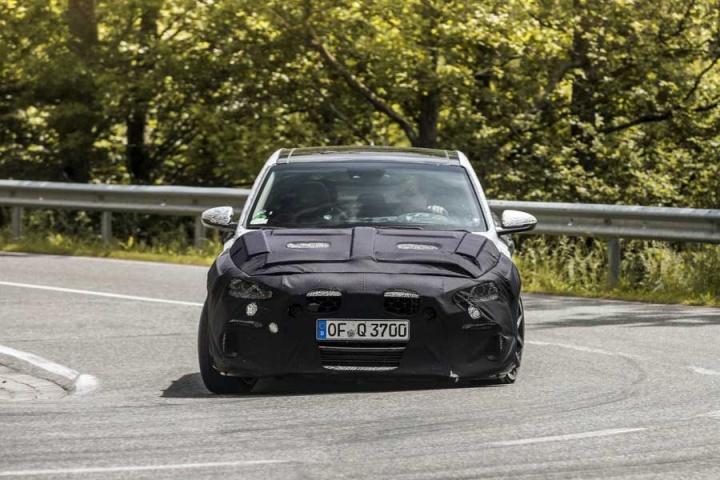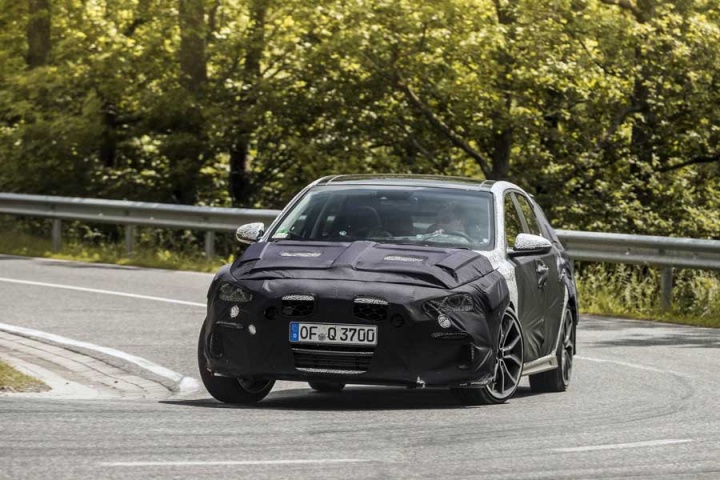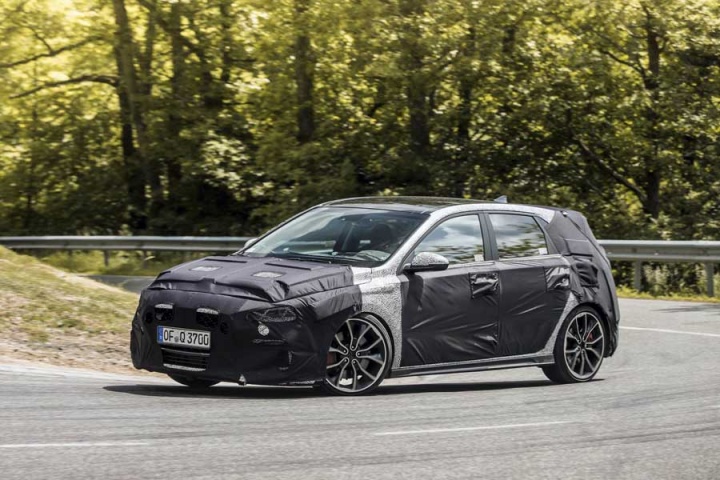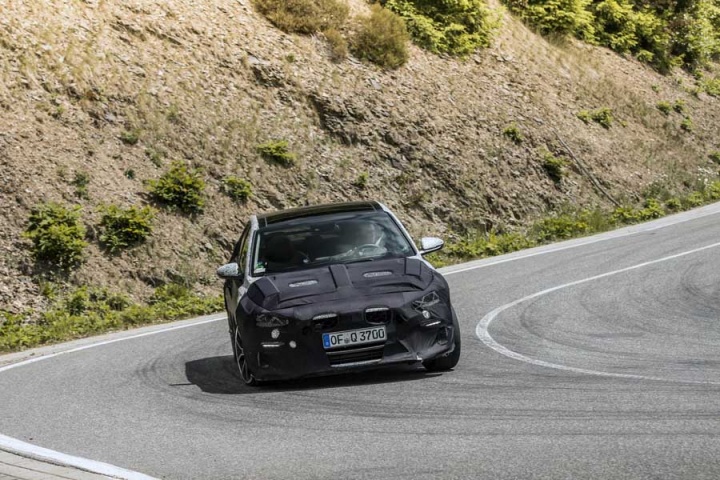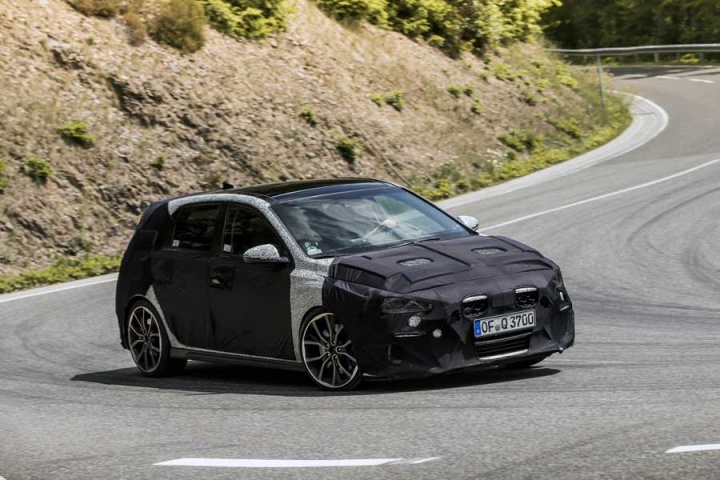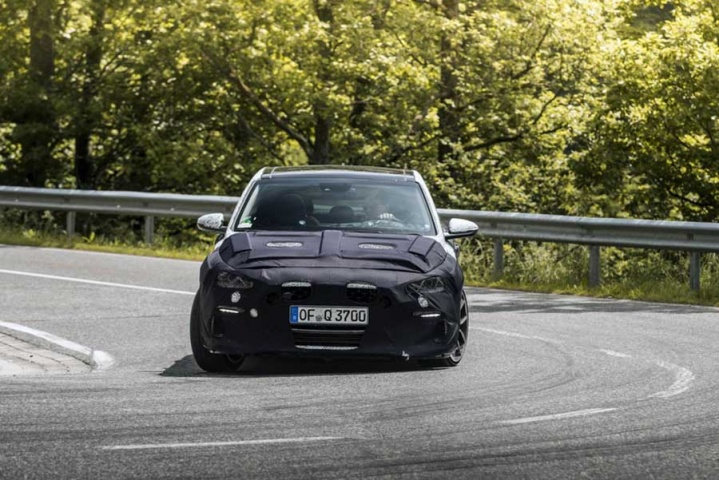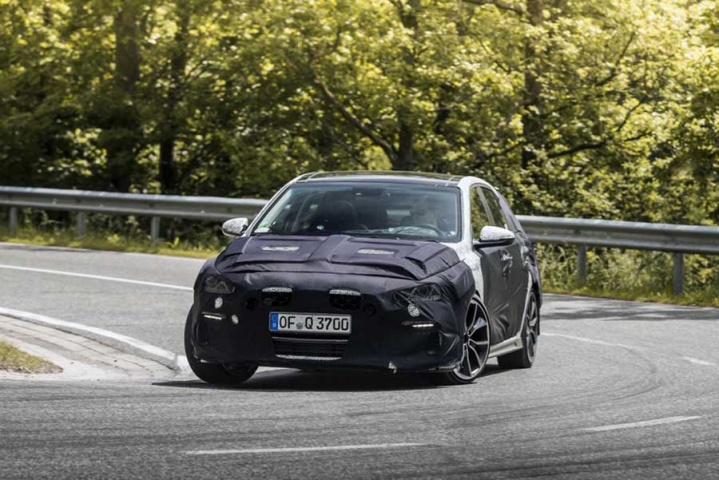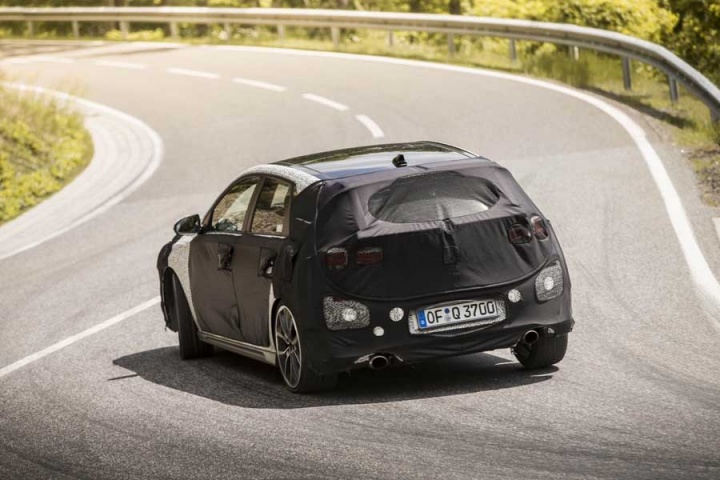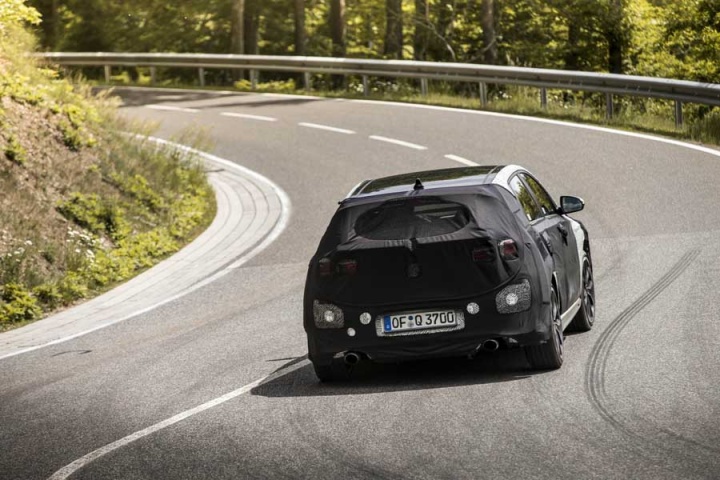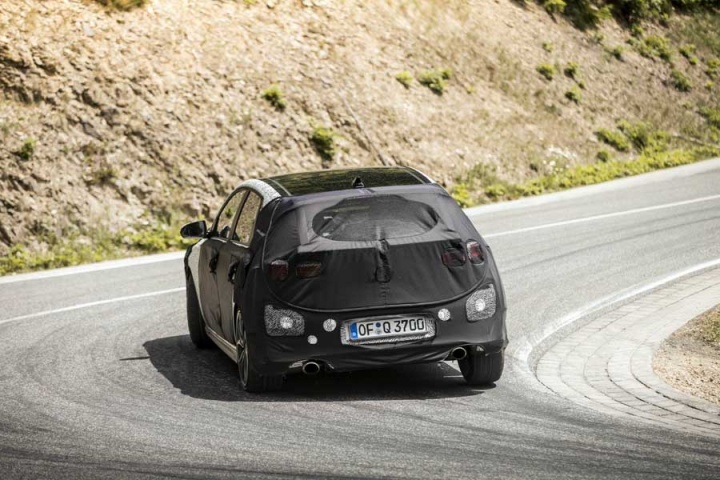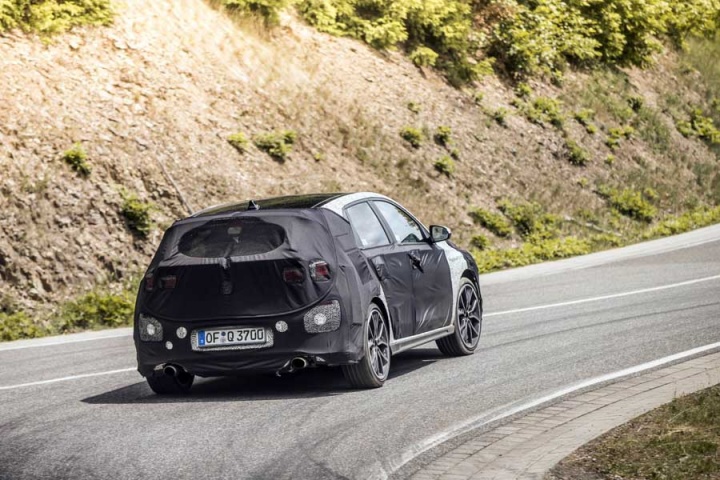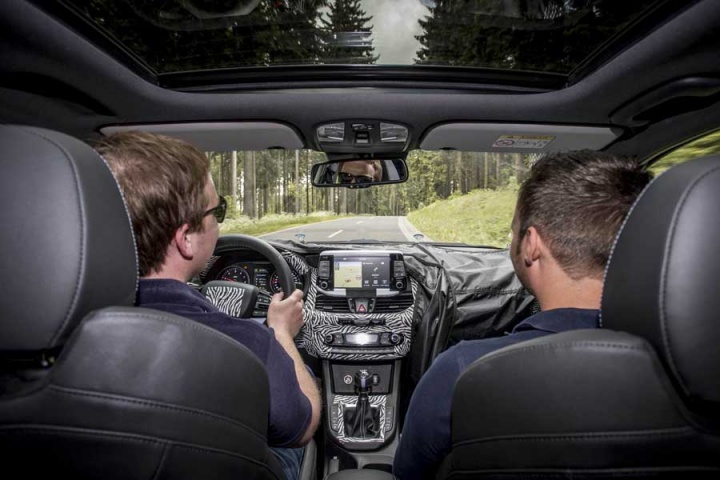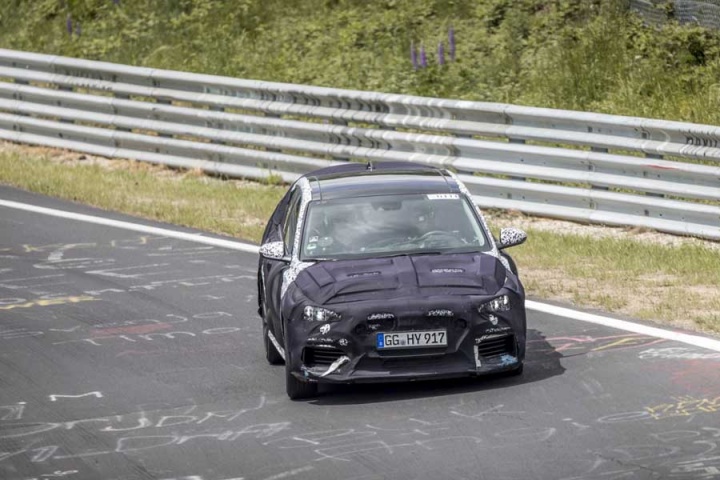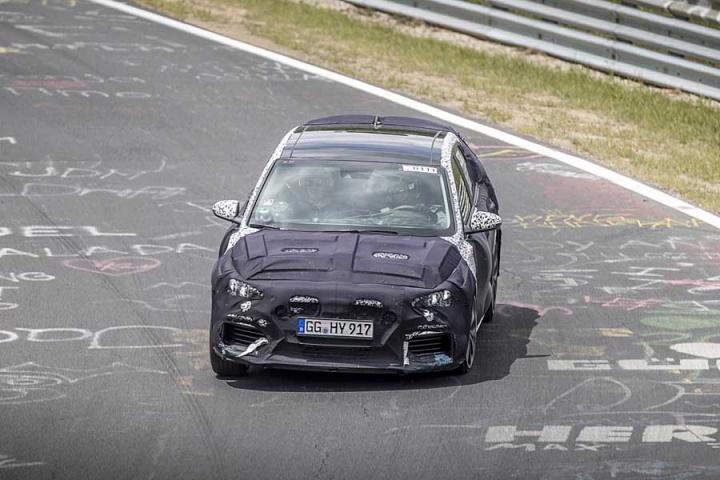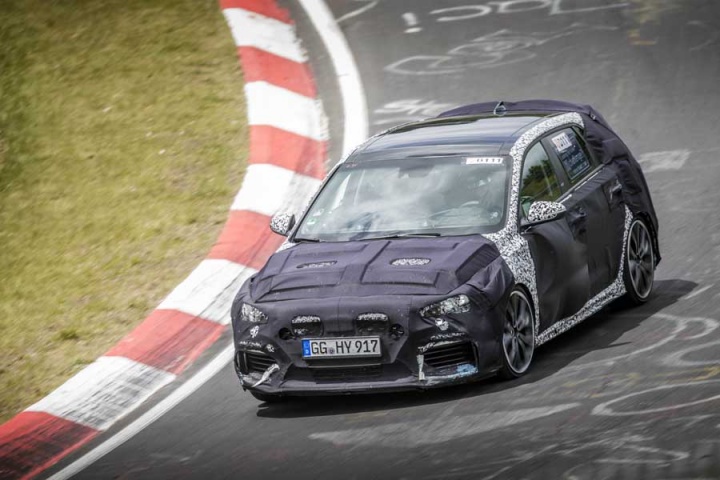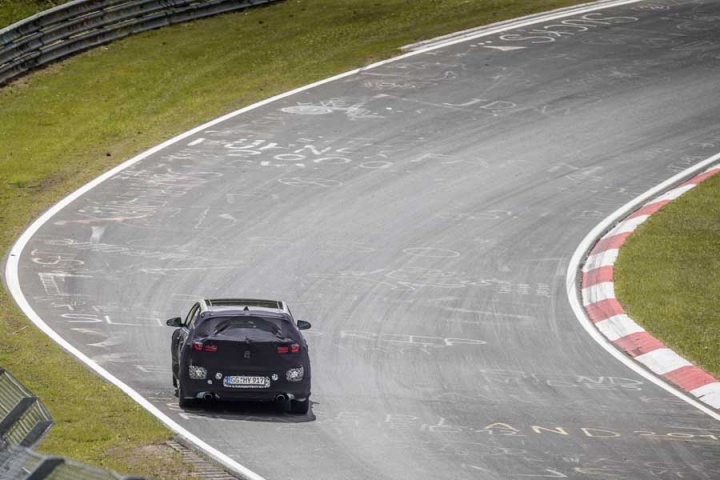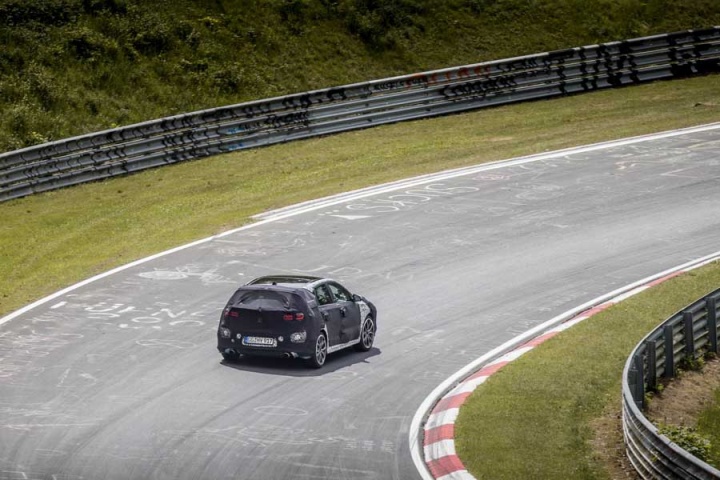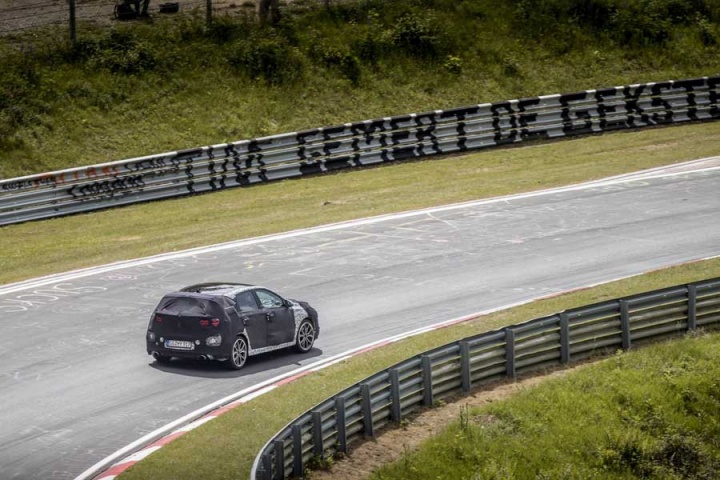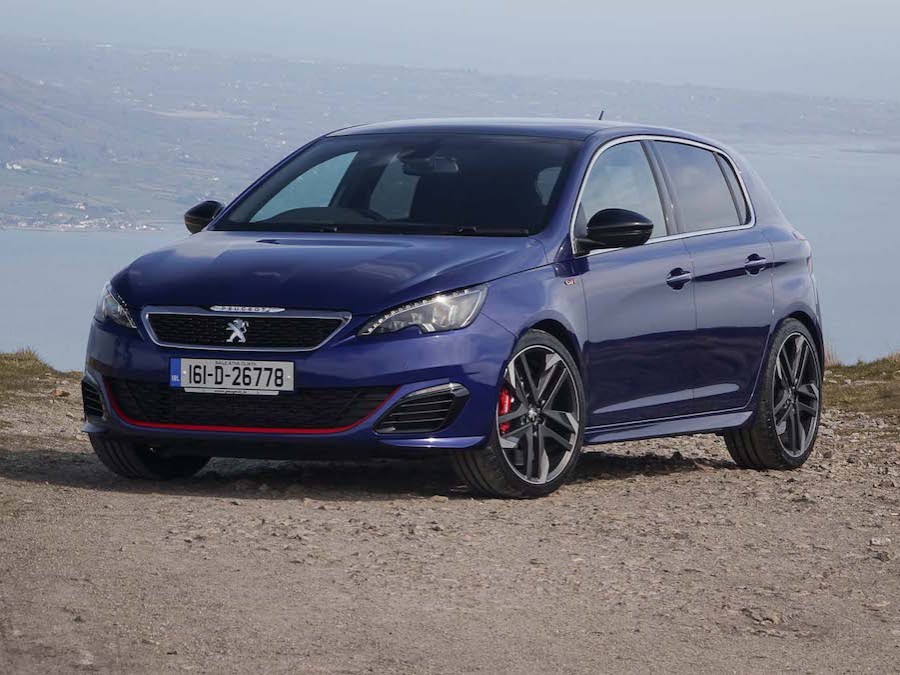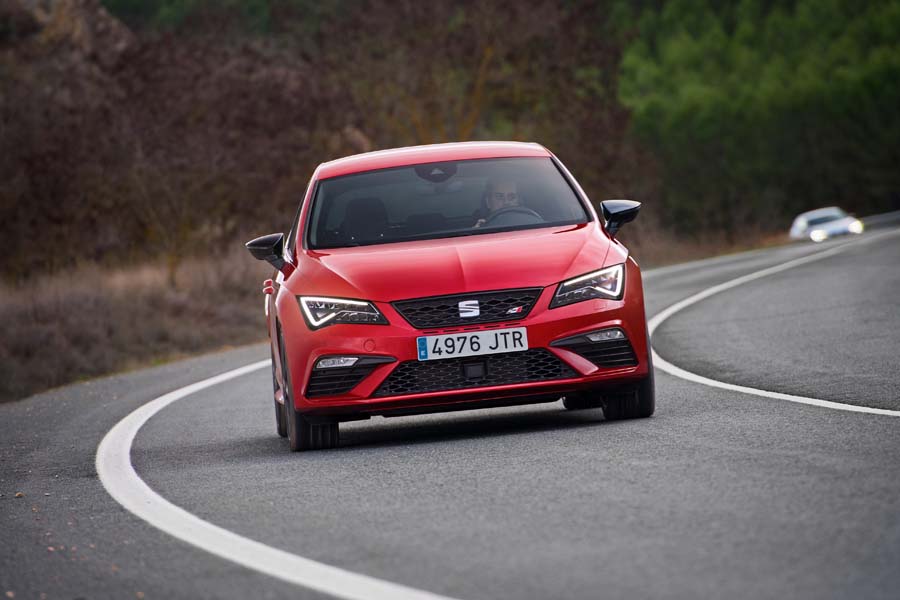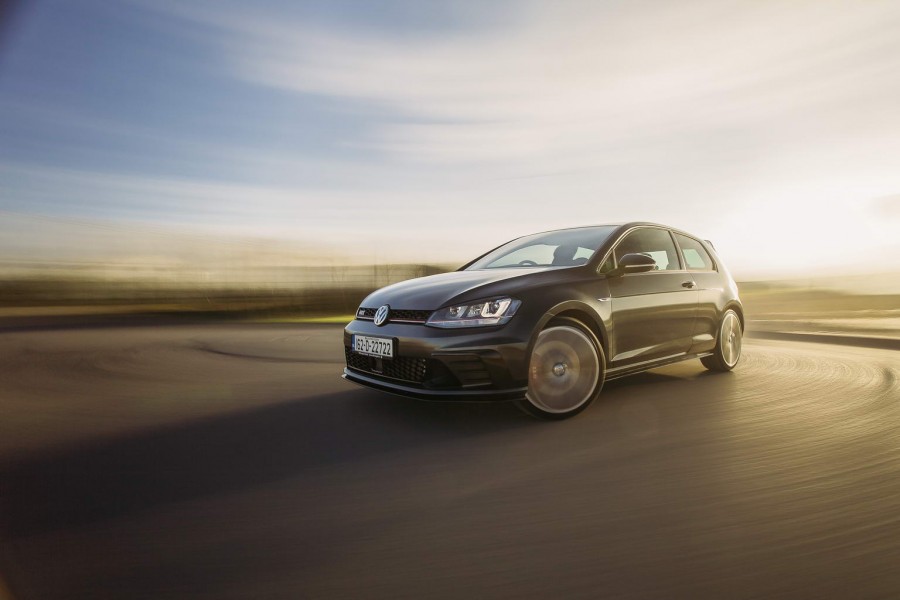The scale of the task ahead of Hyundai should not be underestimated. From nowhere it wants to create an all-new high-performance brand - N - that will be taken as seriously by driving enthusiasts as such illustrious nameplates as M, AMG and GTI. Arguably, the biggest challenge is for the marketing and PR people, though to give them any hope of succeeding the newly formed engineering team needs to create something truly special, a car that will stand out in an already talented field of hot hatches. Our first taste of the new Hyundai i30 N, in engineering prototype form, suggests that it will deliver on that. And some.
In the metal
We've not rated the i30 N here as we've not technically seen it in showroom-ready format. The extra cladding and camouflage wrap do a good job of disguising the car completely, though it doesn't hide the widened arches, the lower stance and the exhaust outlet either side of the rear bumper. Our test cars rode on 19-inch alloy wheels, wrapped in Pirelli tyres measuring 235/35 R19, which are potentially part of a Performance Pack, while 18-inch wheels on Michelin 225/40 R18 tyres are expected to the standard. Up front, a deeper bumper features large air intakes, a restyled main grille with the 'N' badge on it and a red line across the bottom. That emphasises the presence of a modest aerodynamic splitter, which is balanced by a modest roof spoiler and rear diffuser.
The interior continues the restrained approach with comfortable sports seats (we saw part-leather and cloth options) and a sporty new three-spoke steering wheel. There are bespoke instruments and a very swish new set of menu options in the centrally-mounted touchscreen as well, plus a new gear knob. The (almost circular, but not quite) steering wheel itself feels good to hold and it houses three important new buttons - Drive Modes, REV and simply 'N'. Otherwise, space, quality and visibility are all unchanged from that of the standard Hyundai i30.
Driving it
When a car maker starts talking about the Nürburgring test track in Germany and how its latest performance model was developed there, I get a little worried. The circuit is a fiendish challenge for any chassis, but a car optimised to lap it quickly may not always work so well in the real world. Hyundai is unashamedly pinning its flag to the Ring flagpole as it gets ready to launch a new high-performance sub-brand called simply 'N'. Yes, N stands for the Nürburgring, but also for Namyang, the company's R&D centre in South Korea. And so, to get our first taste of the N brand - in the shape of an engineering test mule for the new Hyundai i30 N - we are brought to the firm's highly impressive dedicated test centre overlooking the track at the Nürburgring.
Should we be worried? Is the i30 N going to be good only for countries that know how to lay smooth tarmac that stays that way? Or for the few that actually bring their €40,000 hot hatches on track? Alexander Eichler, Head of High Performance Vehicle Test & Development allays my fears from the off: "The i30 N will be track capable, but it is a road car first and foremost. Testing at the Ring is more about durability than speed for us and we will not be chasing a record here." Ok, this is all good news. And there's more as the engineering team reveal their targets for the i30 N. Phrases like "balanced performance" and "rounded package" are bandied about, as are "neutral balance", "no understeer" and "easy to drive". This is more promising.
There are no shiny brochure handouts on the day, or a USB key with detailed technical specifications, so we glean what we can from the engineers that accompany us on the test drives. Under the bonnet is a turbocharged 2.0-litre four-cylinder petrol engine making 275hp in the Performance Pack car we drove, plus 353Nm of torque. The sound it makes varies depending on the selected driving settings, so it can be quieter than a diesel i30, for example, when in Eco or Normal modes, but considerably louder in Sport. These three options are selected with the Drive Modes button, but to unlock the car's full potential you need to press the N button. Press it again and it moves into N Custom, which allows the driver a dizzying number of setting options and any combination of them: the throttle map has three levels, as does the damping, the exhaust, the power steering, the ESC stability control and even the rev-matching function. Finally, the e-LSD (electronically controlled limited slip differential) has two settings to choose from.
Now, it's looking like there will be a standard car that'll have 250hp, do without the e-LSD and have a slightly less sophisticated damping system, but almost all of the above will be part and parcel of all examples of the i30 N, which is astounding for a brand new model. To say Hyundai is trying to grab attention is a massive understatement.
And it doesn't take long for the i30 N to grab your attention when you're behind the wheel. There are considerable, tangible differences between all the settings and modes. It's a docile and easy car to drive slowly in the lesser modes, but ramp up the levels and it responds as you'd hope with snappier reactions and even more engagement. The firmest damping is too stiff for broken surfaces, but the mid level is spot on, mixing fantastic body control with a good degree of suppleness to allow the chassis to work properly. The steering, a different system to that in the regular i30s, is pleasantly direct and you can even sense what the front tyres are up to. In dry conditions, the answer to that is usually 'gripping and gripping', but that's not to the detriment of enjoyment at all.
It turns out to be both agile at the limit and yet also rock solid stable. One of the test engineers brought us for a (very) fast lap around the Nürburgring itself in the car and it was eye-opening to say the least. The i30 N shrugs off big bumps and is beautifully balanced. Even from the passenger seat you can feel it using all four tyres rather than just pushing on at the front. Body and individual wheel control are exceptional and the stability under hard braking and through very high-speed cornering is truly fantastic. Notably, he chose the mid-level damping and left the stability control turned on for this.
The only weak point of the engineering car was its gearchange. Most of the gate was fine, but it was sometimes tricky to get back down into second from third gear. We were assured that it's a known and fixed issue and that the gearchange in the finished article is actually a little quicker. Some will love the rev-matching facility and those that prefer to do that for themselves can easily switch it off regardless of driving mode. Cleverly, it matches the revs on the upshift too and it all makes for a very entertaining set of pops and bangs and rumbles from the exhaust when the sportiest settings are chosen. All this might sound a little extreme, but once you've had your fun on a favourite piece of road or circuit, you dial back the settings and enjoy a sporty feeling, but entirely civilised family hatchback. Can Hyundai really offer hot hatch buyers a bit of everything? First impressions seem to suggest so.
What you get for your money
We have zero information on pricing at this stage as it'll likely be 2018 before the first examples of the i30 N hit Ireland. It'll never be a big seller here as the sector is small, so don't expect Hyundai to slash the price to boost numbers. We'd guess around the €40,000 mark, probably just under.
Summary
As suggested at the start, Hyundai's job only just begins with the engineering of the i30 N, as now it must convince the world that it's worthy for comparison alongside established hot hatch kings. A few hours at the wheel have convinced me, revealing a hatchback that has a broader range of talents than most other cars in the class, without noticeably compromising in any one area. We can't wait to test drive the finished product later this year.

